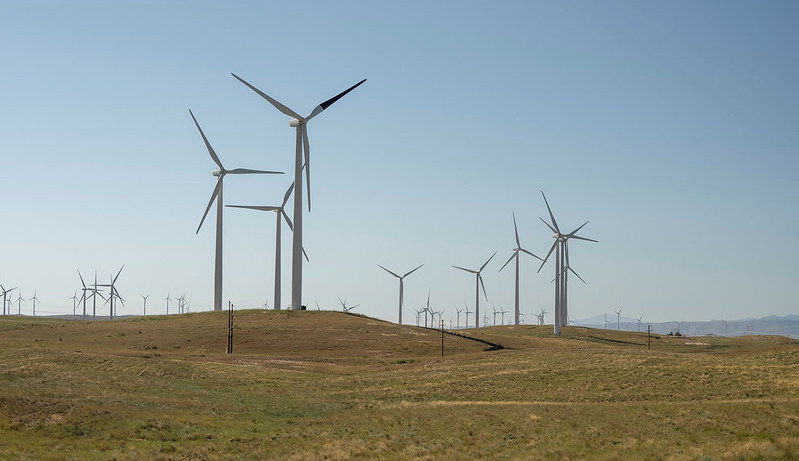Paint it black? OSU scientists study impact of painting wind turbine black, to curb bird collisions

CORVALLIS, Ore. (KTVZ) – Oregon State University researchers are part of a team looking at reducing bird collision risks with wind turbines by painting a single blade of the turbine black.
Wind energy has a significant role during a time of climate change, rising energy demands and a transition from fossil fuels to clean energy, but it poses risks to birds and bats due to collision fatalities. Previous studies estimate that hundreds of thousands of birds and bats die each year as a result of collisions with wind turbine blades.
The Oregon State researchers, working with federal, industry and nonprofit partners, and funded in part by the Oregon Legislature, are building on recent research in Norway that found a nearly 72% decline in bird collisions with turbine blades when one blade was painted black.
“This was a dramatic effect, but it was a relatively small sample size,” said Christian Hagen, senior research faculty in the Department of Fisheries, Wildlife, and Conservation Sciences at Oregon State. “Industry and scientists in North America felt that before this became a policy change, we should replicate, enlarge the sample size and analyze different bird species to ensure it is effective, and that there aren’t any negative effects.”
Twenty-eight wind turbine blades have recently been painted black at a wind farm near Glenrock, Wyoming, operated by PacifiCorp, a key partner and lead on the project.
The study aims to determine the effect of painted blades on reducing fatality rates among eagles, other birds, and bats. Researchers hypothesize that the black-painted blades will disrupt the visual uniformity of the airspace, making the turbines more noticeable to birds and prompting avoidance behavior.
The hypothesis is that eagles and other birds active during the day will be able to detect the painted blades, whereas bats, which rely more on auditory cues and have different visual capabilities, may not perceive the painted blades as effectively.
Hagen became involved with the project after the Oregon Legislature in 2021 provided $400,000 to Oregon State to study the impact of painting blades black. Hagen partnered with PacifiCorp, which was interested in studying the same thing and had an ideal facility for the research.
Hagen and a doctoral student in his lab, Natia Javakhishvili, are collaborating on the project and developing a model that integrates recorded bird movement data from the research site to assess whether painted turbines result in increased bird avoidance.
Javakhishvili’s primary focus is on golden eagles, a species affected by wind turbines. She will use an extensive pre-existing dataset containing eight million points of golden eagle movements to enhance the model's accuracy.
“This study is particularly rigorous and comprehensive due to its incorporation of altitude as a third dimension in the analysis, capturing vertical flight dynamics often overlooked in traditional studies,” Javakhishvili said. “This detailed analysis helps us understand how eagles navigate around turbines and other infrastructure like roads and power lines, which, in turn, helps us develop better strategies to protect them.”
Additionally, at the research site in Wyoming, humans and detection dogs search for bird and bat carcasses. Part of this data set will be used by Javakhishvili to predict the population-level impact of wind energy on ferruginous hawks, a species native to western North America.
Hagen notes that as the research findings become available in the coming years, they will help guide wind energy companies and state and federal agencies, all of whom are looking to reduce bird-turbine blade collisions.
Many of the birds impacted by turbines are protected by federal laws such as the Migratory Bird Treaty Act and the Bald and Golden Eagle Protection Act.
The researchers are also monitoring similar studies underway in Spain, Sweden and South Africa.
Other project partners include the U.S. Geological Survey, U.S. Fish and Wildlife Service, U.S. Department of Energy, Renewable Energy Wildlife Institute, Invenergy and NextEra Energy Resources.